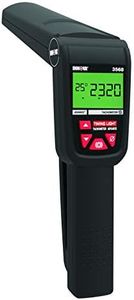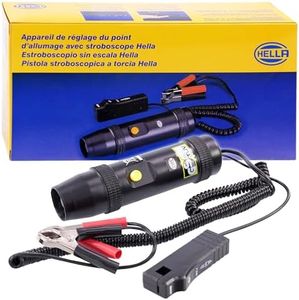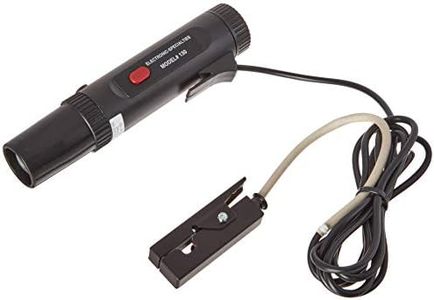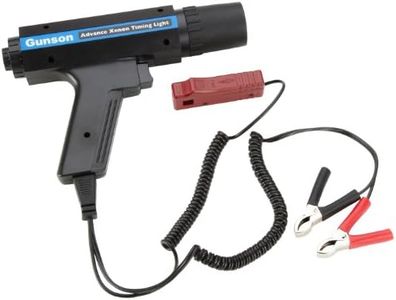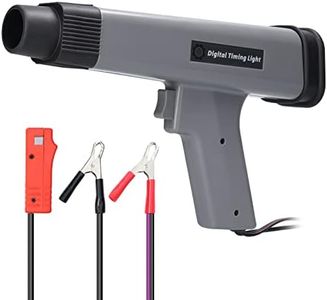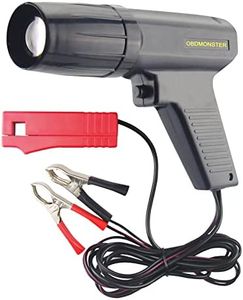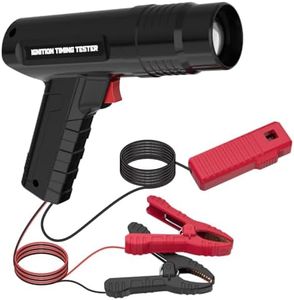We Use CookiesWe use cookies to enhance the security, performance,
functionality and for analytical and promotional activities. By continuing to browse this site you
are agreeing to our privacy policy
10 Best timing lights
From leading brands and best sellers available on the web.Buying Guide for the Best timing lights
When it comes to picking a timing light for your vehicle maintenance needs, it’s important to understand what timing lights do and how their features affect usability and results. Timing lights are used to check and set the ignition timing on internal combustion engines, ensuring that spark plugs fire at the optimal moment for performance and efficiency. Choosing the right timing light will depend on the type of engine you’re working with, your experience level, and how frequently you plan to use it. Let’s go through the key specs to keep in mind when shopping for a timing light.Type (Standard, Advance, or Digital)The type of timing light refers to its basic functionality and the kinds of features it offers. Standard timing lights simply flash in sync with the spark plug, showing you the timing mark. Advance timing lights let you adjust for ignition advance on the tool itself, which is helpful for engines with various advance settings. Digital or multi-function timing lights add extra features like digital readouts and the ability to check other aspects like RPM or dwell. If you’re working on older, basic engines or just setting base timing, a standard model will do. For vehicles with more advanced ignition systems or if you want more versatility, an advance or digital model is better.
Display TypeTiming lights may use simple analog strobe lights, or feature an electronic readout such as a digital display. Analog models are straightforward and just provide a flash to help you line up timing marks. Models with a digital display can show you degrees of advance, RPM, or other measurements, making them easier to use for detailed tuning. If you want a simple check, analog is fine. If you’re after precision or frequently tune vehicles, a digital display can make things clearer and faster.
Compatibility (Voltage and Engine Types)Some timing lights are made specifically for either 6-volt or 12-volt electrical systems, and some can handle both. Others are designed for different types of ignition systems like traditional breaker points, electronic ignitions, or even modern coil-on-plug systems. Make sure the timing light you choose matches the voltage and ignition system of the vehicles you’re working on. If you work on a wide variety, look for a timing light with broad compatibility.
Inductive PickupAn inductive pickup is a clamp that goes over a spark plug wire to sense when the spark fires, triggering the flash. Some cheaper timing lights require direct connections or are less sensitive, while most modern ones use inductive pickups for safety and ease of use. Look for a timing light with a reliable inductive pickup, as this makes the tool safer and more convenient, especially if you’ll be timing different engines.
Adjustable AdvanceAdvance adjustment allows you to manually set the degree of advance on the timing light, so you can check or set the total ignition advance rather than just the base timing. This is especially helpful for those tuning performance engines or working with vehicles that require precise timing adjustments. If you need to do more than basic timing, choose a model with adjustable advance.
Build Quality and ErgonomicsBuild quality includes factors like the material of the case, the length and thickness of the leads, and how comfortable the handle is to hold. Higher quality timing lights tend to last longer, have better triggers, and are easier to hold in tight spaces. Think about how often you’ll use the tool and whether you need something rugged for frequent use or just a light-duty tool for occasional tasks.
Extra FeaturesSome timing lights come with additional features like tachometers (RPM sensors), dwell angle measurement, or even the ability to test other ignition parameters. If you’re a hobbyist or professional who wants a multi-purpose tool, look into timing lights with these extras. If you just need to check timing, you can skip the extras and go for simplicity.
